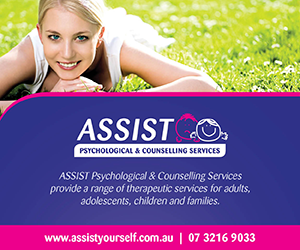Before he began neurofeedback therapy, it took 30mg of daily Ritalin to control ‘Kenny’, a 10-year-old boy with severe ADHD. Although this dose was enough to get him through the school day, at home he hit out and kicked so aggressively that his mother wore shin guards and regularly called the police for help.
After about 40 neuro feedback sessions however, Kenny’s aggression ceased. By 12 months and 80 sessions later, Kenny had become cooperative and motivated; and his medication could be decreased to 7.5mg twice-weekly, says Melbourne-based neuropsychologist, Dr Moshe Perl (PhD).
feedback sessions however, Kenny’s aggression ceased. By 12 months and 80 sessions later, Kenny had become cooperative and motivated; and his medication could be decreased to 7.5mg twice-weekly, says Melbourne-based neuropsychologist, Dr Moshe Perl (PhD).
“My goal is not necessarily for people to get off medication. It’s to get them to function effectively,” says Dr Perl, who runs regular training sessions in the technique.
During neurofeedback the brain’s electrical activity is measured to see whether it is in “normal bounds.” If it is not, patients receive visual and auditory feedback to train the brain to change its wave patterns.
“Disturbances in the brain’s background rhythmic electrical activity will lead to problems processing information, and results in psychological symptoms,” Dr Perl explains. “When there are too many slow or very fast waves, or not enough fast waves, people will have difficulty with focus and alertness.”
The treatment doesn’t involve any stimulation; and patients are awake and alert, playing a video game. Some of the strongest evidence for neurofeedback is for the treatment of ADHD, with at least five randomised controlled trials demonstrating its efficacy.
“Of the hundreds of published, peer-reviewed studies on neurofeedback, almost all show positive effects, with no negative effects,” says Dr Perl.
It’s also been shown to benefit many other conditions, including seizure disorders, tics, acquired brain injury (especially focus and emotional regulation), bedwetting, night terrors, worry and anxiety, PTSD and others — but it is not without limitations and is best used in conjunction with traditional interventions — not as a replacement.
“[Neurofeedback] is [also] very good for Asperger’s and Autism, but parents must continue to bring their child for treatment and implement behaviour control strategies,” he added.
And as Kenny’s case illustrates, neurofeedback can be time-intensive. After a lengthy initial assessment, sessions usually last close to an hour and patients are seen two to three times a week, often requiring upwards of 36 sessions — and for more severe cases, sometimes much more.
As first appeared in Medical Observer, 26 February, 2013. Source: http://www.neurotherapy.com.au/, www.isnr.org, www.appliedneuroscience.org.au























